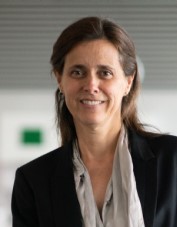- I study biotechnological engineering at Polytech Clermont-Ferrand, and I heard about this opportunity from a friend who did her internship with the Microbiome and Antibiotic Resistance research group last year. My friend was very happy with everything: the lab, the team and the city, and since I wanted to go to a Nordic country it sounded perfect for me.

Interdisciplinary research group
Professor Petersen and her group have received students from abroad before. This winter, Leonardo from Brasil spent three months with the group. - Our experience with the students from Polytech Clermont-Ferrand has been excellent, says professor Petersen, and she is happy to hear that also Elodie enjoyed her stay in Oslo:

- It is important for us that students participating in ERASMUS programs have a good experience at our faculty. The students participate in ongoing projects, but with a plan that they help designing together with other members of the group. The group is interdisciplinary, and this helps the students to immerse into the dynamics of working with professionals with different backgrounds. For us, receiving students from other countries exposes the group to new cultures and new forms of communication. It also gives young researchers in the group the opportunity to acquire experience in research supervision.
Patients with back pain on long term antibiotics
Elodie is part a project studying the effects of long-term antibiotic treatment on patients. Some studies have shown that long-term antibiotic treatment, up to three months, is beneficial for patients with chronic lower back pain, and the project examines samples from one of these studies.
- For our purposes, it is interesting to see what such a long treatment with antibiotics does with the antibiotic resistance levels in the patients’ microbiota, says Elodie.
- I have studied samples from the saliva of 7 patients who received the antibiotic amoxicillin, and 9 patients who got a placebo. We have three different samples from each patient: before they started the antibiotic treatment, right after the treatment was over, and one year after the treatment. We have some first results, but it’s hard to make any interpretation yet.

Preparing the samples for DNA sequencing
Elodie's work focuses on functional metagenomics - a method by which DNA fragments from a community of microbes are inserted into a bacterial host, with the aim of identifying the function of specific genes. If a DNA fragment carries for instance an antibiotic resistance gene, this will enable the bacterial host to grow in the presence of the antibiotic. In this methodology, fragments are ligated to specific markers that allow the easy identification of the antibiotic resistance genes by DNA sequencing
In this project, the bacterial host Escherichia coli is used. It is itself sensitive to antibiotics, but becomes resistant when it receives DNA from the microbial community that confers antibiotic resistance.
- What I have been doing is to prepare this material so that it is ready to be sequenced. We need to make sure that we are only using the cells with the right DNA fragments. When we have made sure we have only the right cells, we put them on plates containing different antibiotics. If they start forming colonies, it is very likely that they are resistant to the antibiotic on the plate. Once the DNA sequencing results are obtained, we will know the identity of the resistant genes.

Which genes are resistant?
- In the last years we have focused our attention into the challenges posed by the dramatic increase in antibiotic resistance, says professor Fernanda Petersen. - Functional metagenomics, which is the focus of Elodie’s project, enables the identification of resistance genes from bacteria that we can not culture in the laboratory. In addition, it has the potential to reveal mechanisms of resistance that remain undiscovered. These are important in providing information that can be used in surveillance and in the development of new antimicrobial strategies.

Elodie is going back to Clermont-Ferrand in the start of August, to finish her master's degree. But she will not forget the samples just yet:
- I am already looking forward to seeing the results of the DNA sequencing, and fortunately the group have promised to send me the results. I am especially excited to see if new resistance genes have developed during the course of antibiotic treatment.